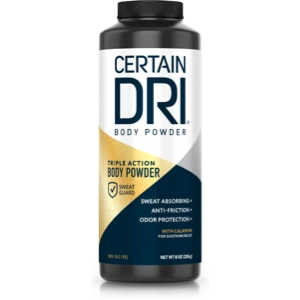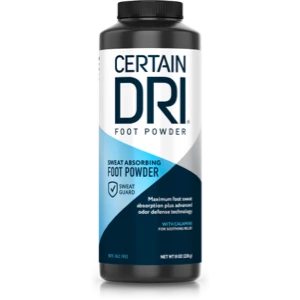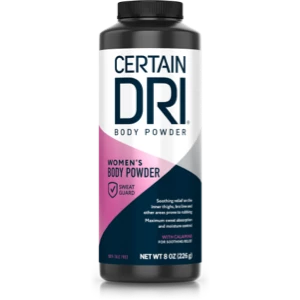There Are Sex Differences in Sweating, But Treatments Are the Same
This article is brought to you by the team at Certain Dri antiperspirants. Certain Dri is the #1 recommended brand of antiperspirants for people with excessive sweating or hyperhidrosis.
As group exercise resumes across the country and the weather warms up, we’re bound to be seeing more sweat. Whether on the track, in the dance studio, at crossfit, or among the ellipticals and spin cycles, it’s clear, some of us sweat more than others. Partly this is due to genetics. It’s also evidence of the fact that 4.8% percent of us have hyperhidrosis (the medical condition of excessive sweating). But did you know that gender also plays a role in perspiration?
Before puberty, most kids tend to sweat about the same. But with hormonal changes at adolescence, research shows sweating starts to become a bit different between the sexes. While testosterone influences male perspiration,* estrogen contributes to lower body temperatures in women. With activity and heat, this means males tend to begin sweating sooner and in greater amounts than females. Also contributing to increased sweating in men is body size. Men are often larger and a bigger body produces additional heat and therefore needs more cooling down.
Even among top athletes men sweat more than women. In one Japanese study, scientists showed that among women and men who are of similar size and fitness level (elite performers, in this research), men sweat more than women when placed in the same conditions. The researchers hypothesize that this could be because male human ancestors evolved to sweat more so they’d have more stamina for hunting, especially in hot weather, while female human ancestors may have evolved to retain fluids for reproduction.
Whatever your gender, you’ve got approximately 2-4 million sweat glands and it’s normal and necessary to sweat. If, however, you sweat excessively and uncontrollably, beyond what’s needed or expected in reaction to ambient temperature, a workout, or stress, you might have hyperhidrosis. People with hyperhidrosis sweat so much that it has negative life impacts. This level of sweating may “drip” off the skin and it can cause clothes or hair to become damp. People with hyperhidrosis often feel physically uncomfortable as well as embarrassed, anxious or ashamed. They may drop items, damage things, change clothes or shower often, or slip and fall due to sweating.
Unfortunately, many people experiencing excessive sweating are too embarrassed to ask for help. It doesn’t have to be this way because treatments and combinations of treatments can make life with extreme sweating more manageable. Before you look for treatments, however, talk to a healthcare provider if you have new or different sweating because, sometimes, sweating can be a sign of another underlying medical condition that should be treated on its own. This type of sweat problem is called secondary hyperhidrosis and there are a number of medical conditions and medications that can cause it. You can learn more about secondary hyperhidrosis from the International Hyperhidrosis Society.
Whether you’ve been diagnosed with hyperhidrosis, are planning on talking to your doctor about extreme sweating, or just want to feel drier on a day-to-day basis, powerful antiperspirants like Certain Dri can help.
Certain Dri is the #1 recommended brand of antiperspirants for people with hyperhidrosis. In a 2017 survey, 85.3% of the dermatologists surveyed recommended the active ingredient aluminum chloride most often for patients with excessive sweating. Without a prescription and on the store shelves, you can only find aluminum chloride in Certain Dri Prescription Strength Clinical Roll-On.
Of course, it’s also important that an antiperspirant be gentle and kind to skin. Rest assured, Certain Dri is water-based, not alcohol-based like some other products, so it’s milder for your body
Follow these links for coupons and convenient home ordering and delivery.
Thanks to the International Hyperhidrosis Society for providing information on its website that was helpful for this blog post.
*Kawahata A (1960). Sex differences in sweating. Essential Problems in Climatic Physiology, ed. Ito S, Ogata H & Yoshimura H, pp. 169–184.










